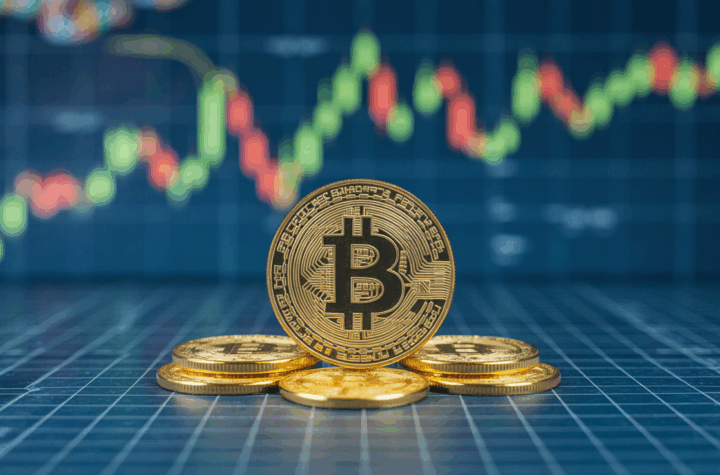
Bitcoin Eyes Fed Decision as Bank of America Foresees End of Quantitative Tightening
The anticipated conclusion of quantitative tightening (QT) may offer support to Bitcoin (BTC) and other risk assets, though economic uncertainties could limit gains.
As Bitcoin looks to rebound from its recent slump, investors are closely watching Wednesday’s Federal Reserve (Fed) meeting. Many expect that any indication of an end to QT could provide a boost to financial markets.
The Fed will announce its rate decision at 18:00 UTC, followed by a press conference with Chairman Jerome Powell.
While no changes are expected to the current 4.25%-4.50% interest rate range, market participants will focus on the Fed’s stance regarding QT. Policymakers are balancing liquidity concerns with the Treasury’s ongoing debt ceiling challenges. Additionally, the Fed’s summary of economic projections (SEP) will offer further insights into its outlook.
Since June 2022, the Fed has been reducing its $9 trillion balance sheet, which swelled due to COVID-era stimulus. The QT program has tightened financial conditions and reversed the liquidity-driven surge that fueled Bitcoin’s 2020-21 rally. However, minutes from January’s Fed meeting indicated that officials discussed slowing or pausing QT, raising the likelihood that Powell may address the matter today.
Noelle Acheson, author of Crypto Is Macro Now, weighed in on the potential policy shift: “Powell previously hinted that QT could conclude in 2025. If he reiterates that now, it would mark a significant shift, signaling that the Fed is prepared to adjust policy if needed.”
Though a full return to quantitative easing (QE) is unlikely in the near term, Acheson pointed out that halting QT would allow the Fed to reinvest maturing assets, injecting liquidity into markets. She also noted that this move would help prevent disruptions in the Treasury market, where $9 trillion in debt is set to mature this year.
Lauren Goodwin, economist at New York Life Investments, shared a similar outlook, suggesting that an earlier-than-expected QT conclusion could be interpreted as a dovish signal for markets.
Traders on decentralized betting platform Polymarket assign a 100% probability that QT will end before May. The bet will resolve as “Yes” if the Fed expands its securities holdings by the end of April.
Bank of America Predicts QT Will End
Bank of America (BofA) and other major investment firms anticipate that the Fed will soon halt QT, citing economic uncertainty, particularly in light of President Donald Trump’s trade policies.
“Our rates strategists expect the Fed to announce a QT pause while the debt ceiling issue remains unresolved, as suggested in the January meeting minutes. They do not anticipate QT resuming later, with an official confirmation expected later this year,” BofA stated in a March 14 client note.
Pausing QT could lower yields on U.S. Treasury bonds, making risk assets like Bitcoin more attractive to investors.
Stagflation Concerns May Limit Bitcoin’s Upside
Trump’s tariffs have heightened inflation risks while also threatening economic growth, raising fears of stagflation. If the Fed’s updated economic projections reflect this reality, it could delay rate cuts, dampening Bitcoin’s potential upside from a QT pause.
Acheson cautioned that signs of stagflation—such as lower GDP forecasts and rising core PCE inflation estimates—could emerge in the Fed’s SEP, which may unsettle financial markets.
“If the Fed formally acknowledges a stagflationary shift, markets may react negatively. Some risks have been priced in, but a confirmation that rate cuts will be postponed could catch investors off guard,” Acheson said.
Recent U.S. retail sales and regional manufacturing data have pointed to economic weakness, while inflation indicators have been rising, likely due to Trump’s trade policies.
Summarizing the outlook, Bank of America noted: “Given recent economic data and policy actions, we anticipate the Fed will revise its growth projections downward while adjusting inflation forecasts upward—subtly acknowledging stagflation risks.”
Despite these challenges, BofA still expects the Fed’s dot plot to indicate two rate cuts in 2025 and 2026, highlighting the complex economic landscape ahead.






More Stories
DOGE drops to $0.18 amid long-term holder exits and a looming death-cross price pattern.
Asia Markets: Cautious Calm Settles Over Bitcoin as Risk Positions Rebuild
“Analyst Dubs It ‘Bitcoin’s Silent IPO’ While Dissecting Market Stagnation in Viral Essay”